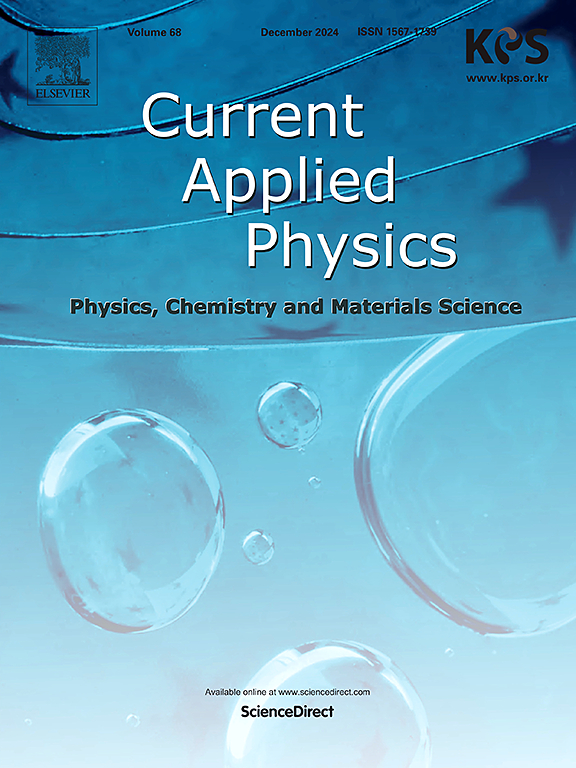Effect of calcination temperature on the microstructure and energy storage performance of bismuth layer-structured relaxor ferroelectric BaBi2Nb2O9 ceramics
IF 3.1
4区 物理与天体物理
Q3 MATERIALS SCIENCE, MULTIDISCIPLINARY
引用次数: 0
Abstract
The BaBi2Nb2O9 (BBN) ceramic, calcined at a temperature of 750 °C–950 °C, was fabricated using conventional solid-state reaction method. The higher the calcination temperature, the lower intermediate phases in the raw powders. After the sintering process, a single BBN phase without intermediate phases is formed in all ceramic specimens. However, structural changes such as grain size and XRD peak shift of the (115) plane appear depending on the calcination temperature. The structural and electrical properties of the ceramics calcined at 950 °C shows the largest average grain size and lower dielectric breakdown strength (BDS) value. On the other hand, the ceramics calcined at 750 °C shows the smallest grain size and high dielectric BDS value. This suggests that BBN ceramics calcined at 750 °C have the most beneficial properties as an energy storage device.

煅烧温度对铋层结构弛豫铁电BaBi2Nb2O9陶瓷微观结构和储能性能的影响
采用常规固相反应法制备了BaBi2Nb2O9 (BBN)陶瓷,焙烧温度为750℃~ 950℃。煅烧温度越高,原料粉中的中间相越少。烧结后,所有陶瓷试样均形成单一的BBN相,没有中间相。而(115)面晶粒尺寸和XRD峰移等结构变化随煅烧温度的变化而变化。在950℃下煅烧的陶瓷结构和电学性能表现出最大的平均晶粒尺寸和较低的介电击穿强度(BDS)值。另一方面,在750℃下煅烧的陶瓷表现出最小的晶粒尺寸和高介电BDS值。这表明在750°C下煅烧的BBN陶瓷作为储能器件具有最有利的性能。
本文章由计算机程序翻译,如有差异,请以英文原文为准。
求助全文
约1分钟内获得全文
求助全文
来源期刊

Current Applied Physics
物理-材料科学:综合
CiteScore
4.80
自引率
0.00%
发文量
213
审稿时长
33 days
期刊介绍:
Current Applied Physics (Curr. Appl. Phys.) is a monthly published international journal covering all the fields of applied science investigating the physics of the advanced materials for future applications.
Other areas covered: Experimental and theoretical aspects of advanced materials and devices dealing with synthesis or structural chemistry, physical and electronic properties, photonics, engineering applications, and uniquely pertinent measurement or analytical techniques.
Current Applied Physics, published since 2001, covers physics, chemistry and materials science, including bio-materials, with their engineering aspects. It is a truly interdisciplinary journal opening a forum for scientists of all related fields, a unique point of the journal discriminating it from other worldwide and/or Pacific Rim applied physics journals.
Regular research papers, letters and review articles with contents meeting the scope of the journal will be considered for publication after peer review.
The Journal is owned by the Korean Physical Society.
 求助内容:
求助内容: 应助结果提醒方式:
应助结果提醒方式:


